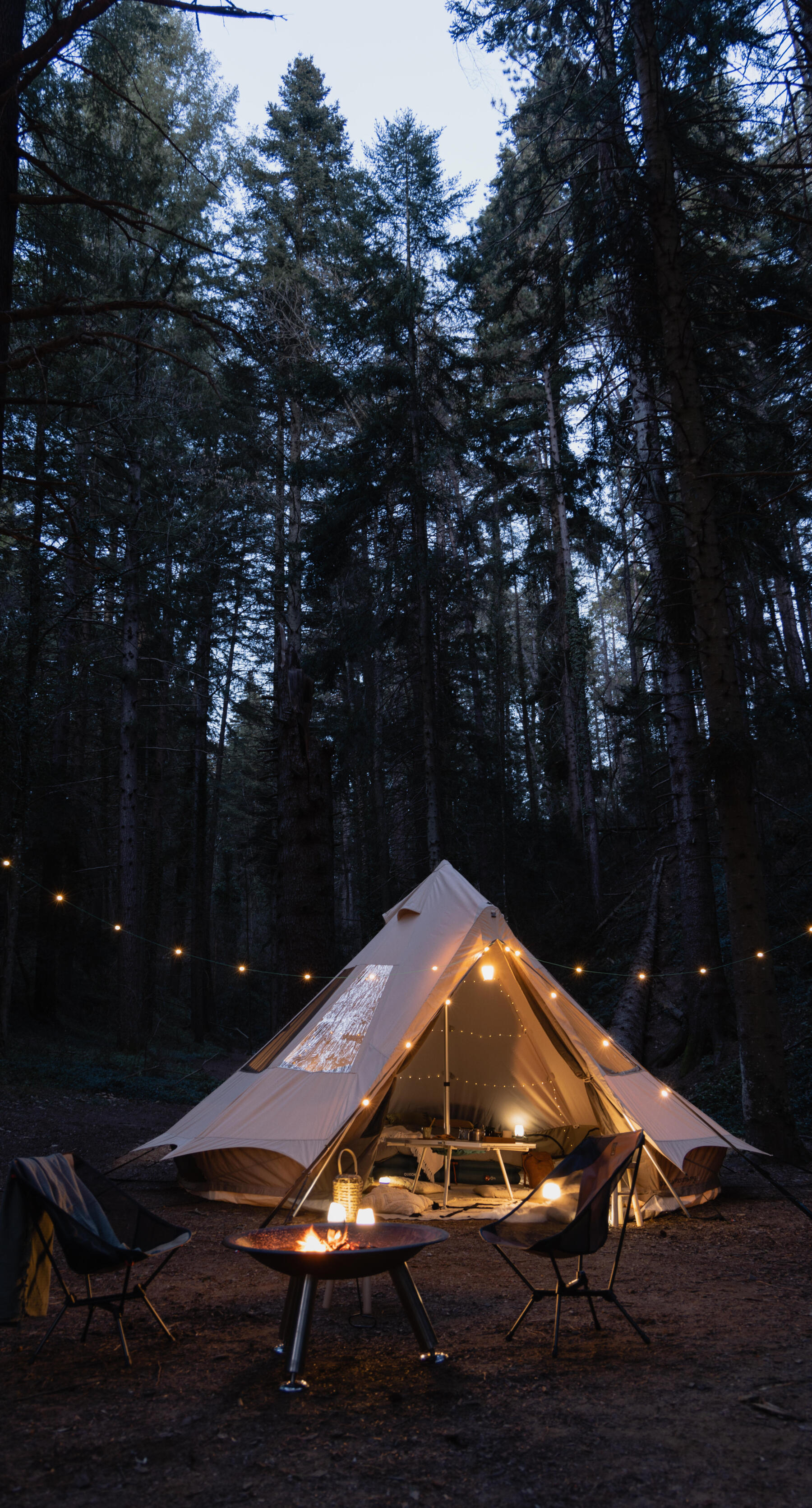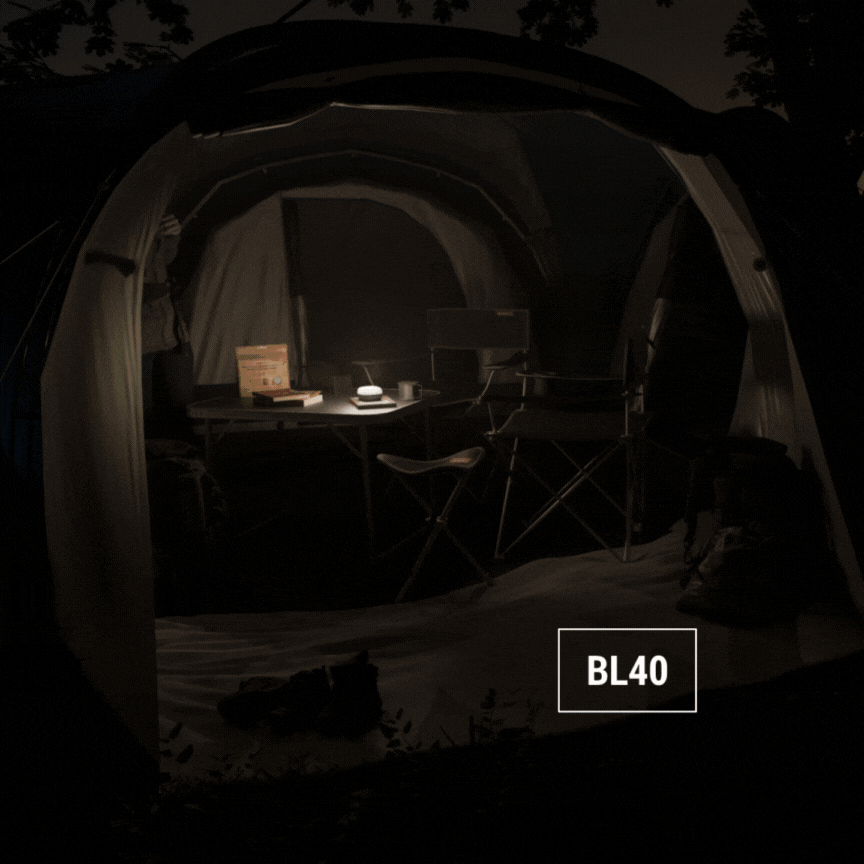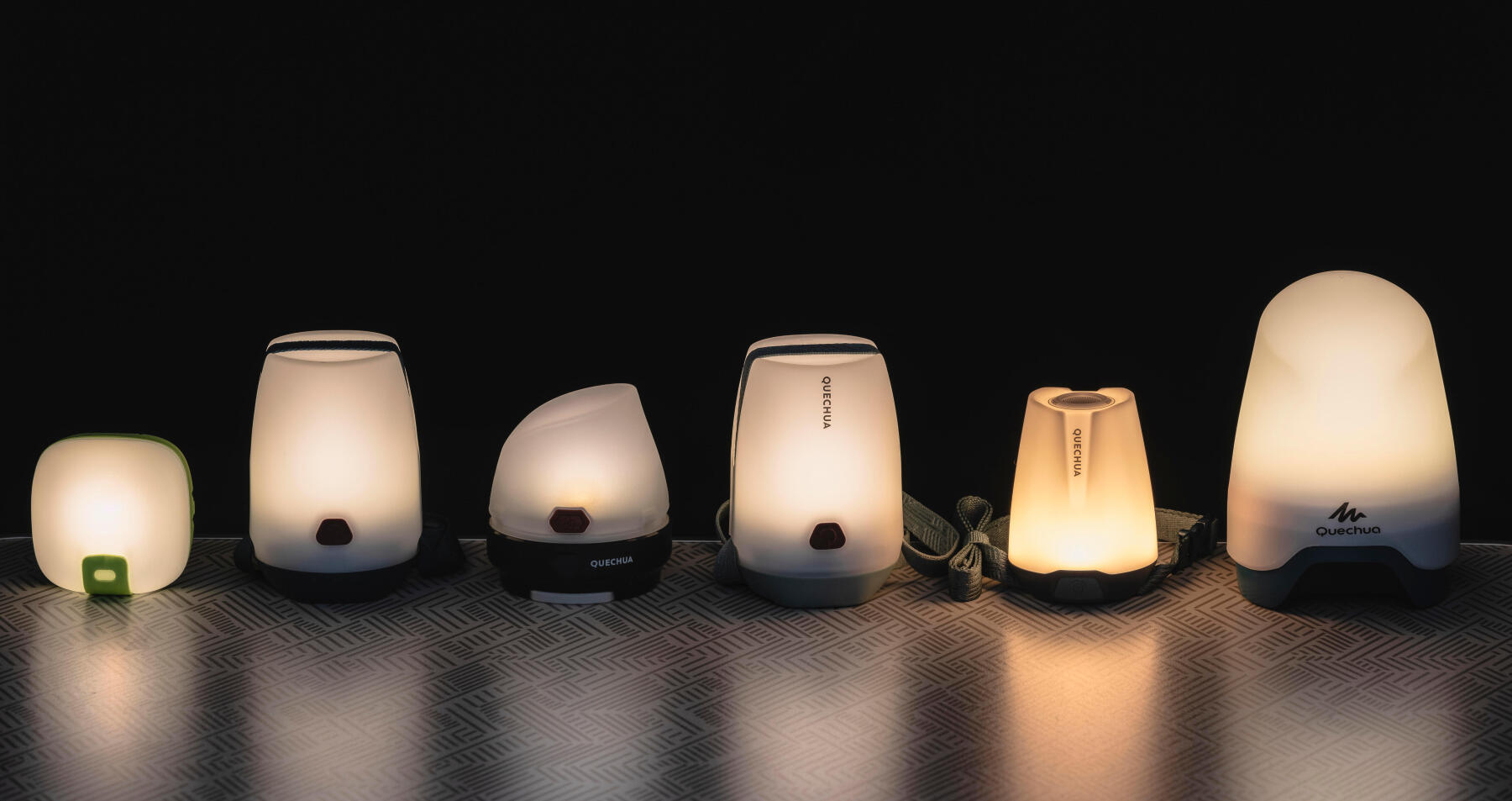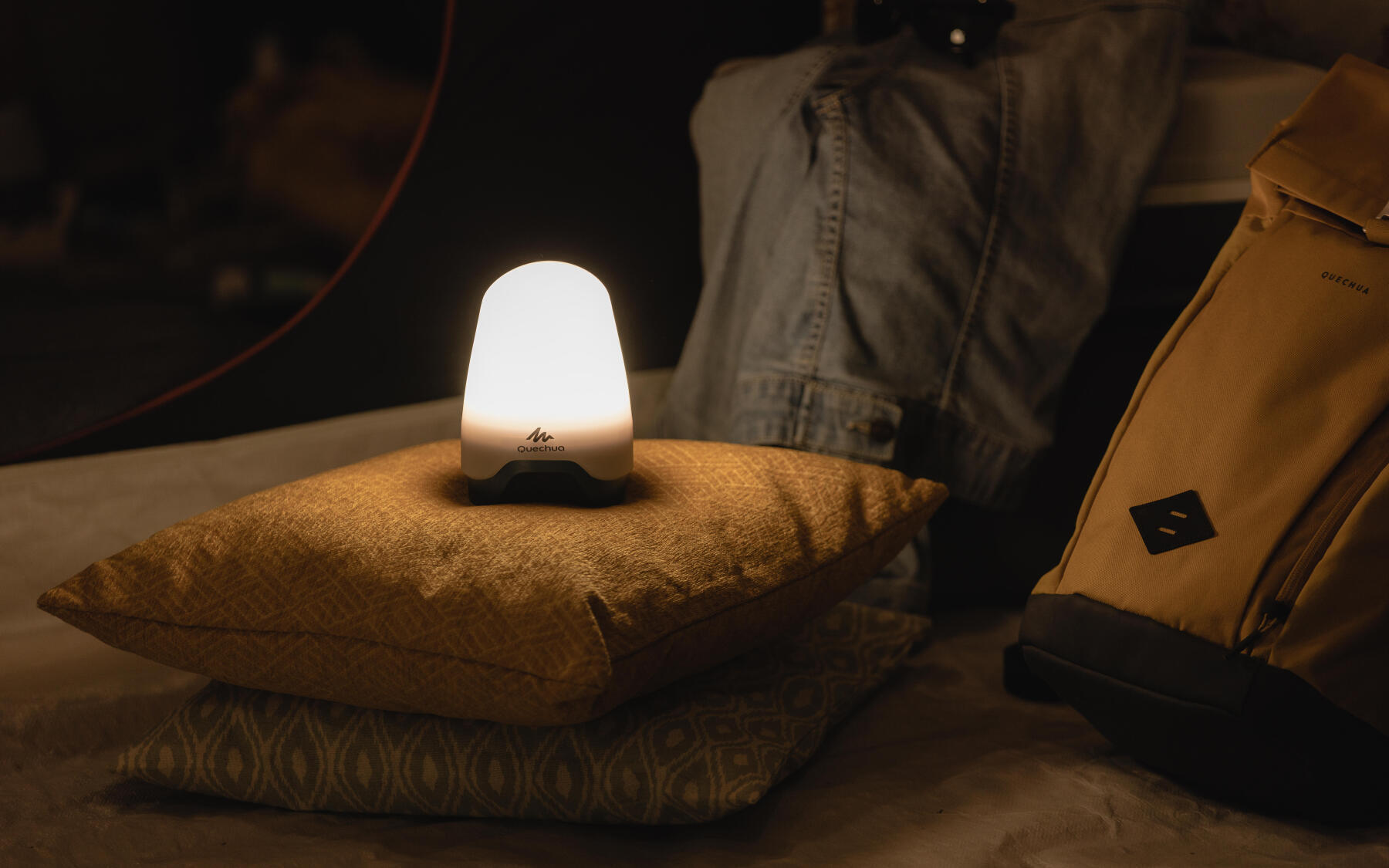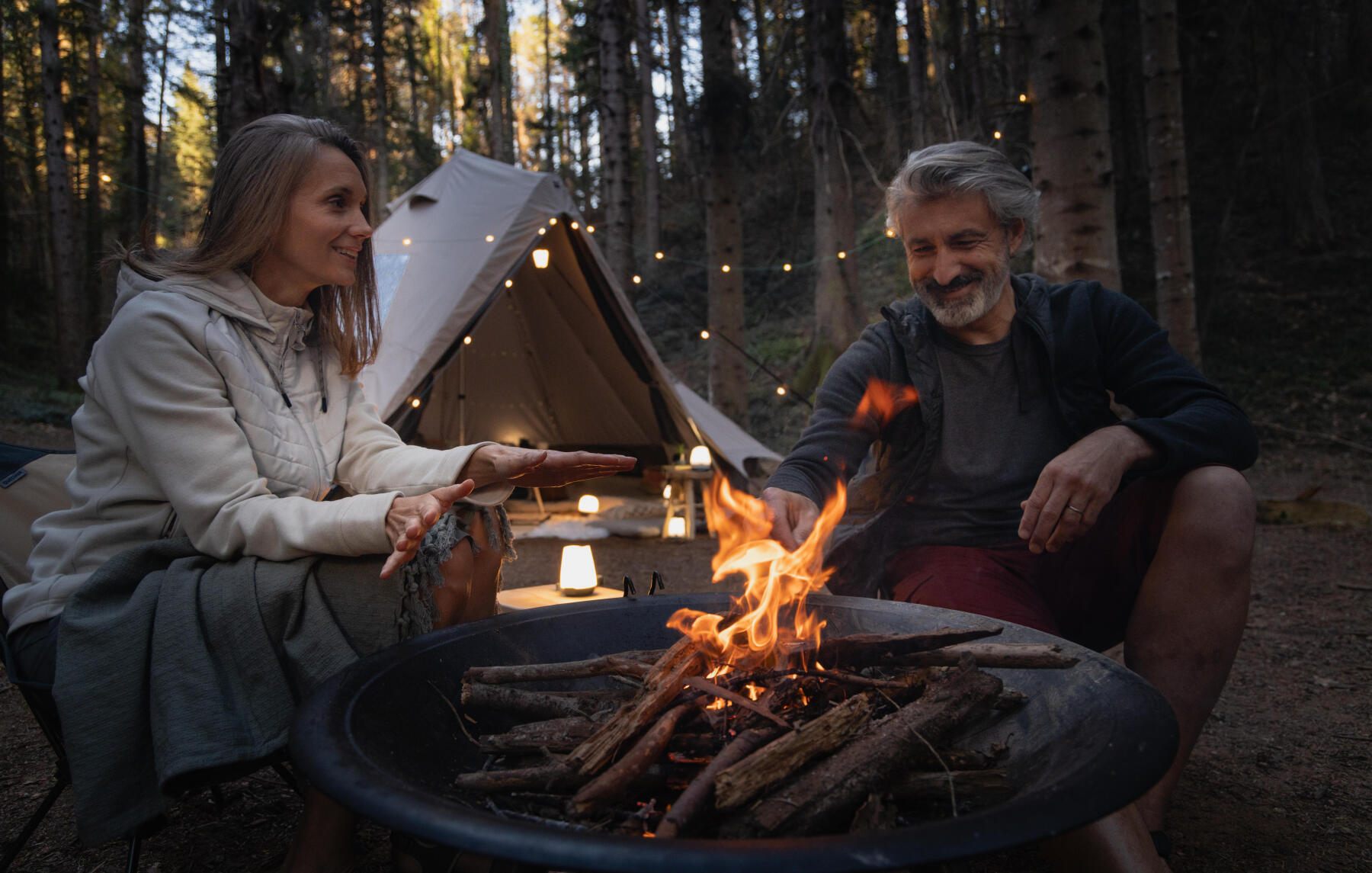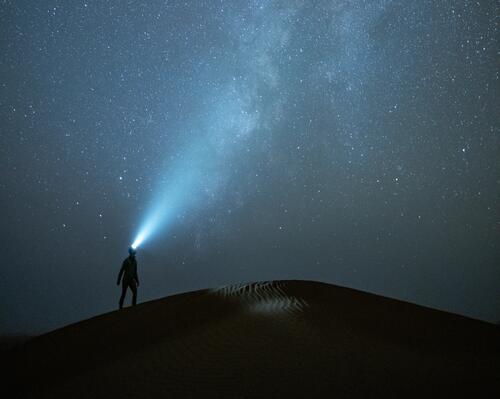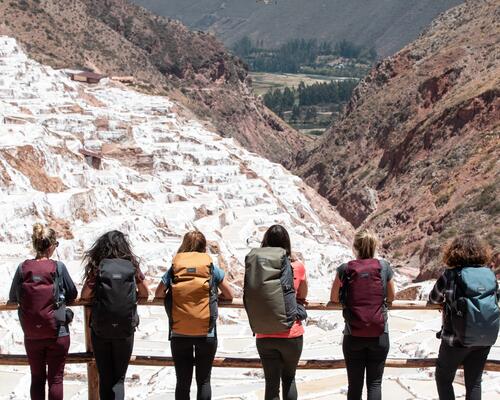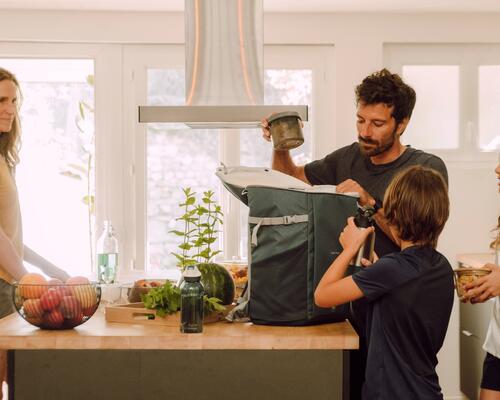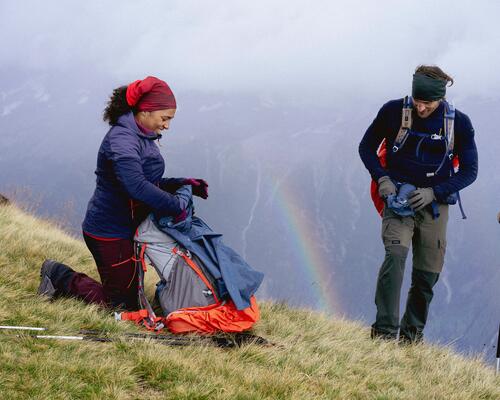1/ Which camping light to choose depending on the number of people who need light.
"Tell me how many lumens your light has and I'll tell you how many people it can be for".
One of the first criteria is wattage of the light. For LED lights, which are the most common, efficient and economical on campsites (as well as at home), this is expressed in lumens (lm). This measurement shows the total amount of light it produces.
• For a camping light that will be used for just one person, opt for 40 or 50 lumens.
• For two people, choose a 100 lumen camping light
• For four people, simply double the value for two people, so you'll need 200 lumens (simple, isn't it?).
• For an ultra-powerful camping light that can be used for up to eight people, you'll need 400–500 lumens.
That's just as well, because Quechua has thought of the needs of lone hikers and groups who want to have some light in the evening to chat and play cards! Our range includes LED camping lights for one person (40 or 50 lumens), two people (100 lumens), four people (200 or 230 lumens) and up to eight people (400 lumens).
Also, the shape of our lights means that they can shine at 360° for optimum illumination!
>> See the full range of Quechua camping lights
Lighting for camping: child’s play! As your child gets older, they will surely want to have their own light to be independent and stay up at night (after all, it's the holidays and there's no school tomorrow!). Quechua has thought of your little ones’ search for autonomy and has designed a 40-lumen light that's easy to use and resistant to shocks and rain! And its cubic shape makes it easy to slip into a bag without taking up much space. It even has a little handle so your child can carry it anywhere. It's available in three colours, so each of your children can have their own.
>> View the BL40 camping light
Of course, these values expressed in lumens are the maximum values for the light. Many LED camping lights, including those in our range, have several modes and light levels to alternate between full power, dimmed or red light. Why a red light? We'll tell you all about it below. Stay with us!

